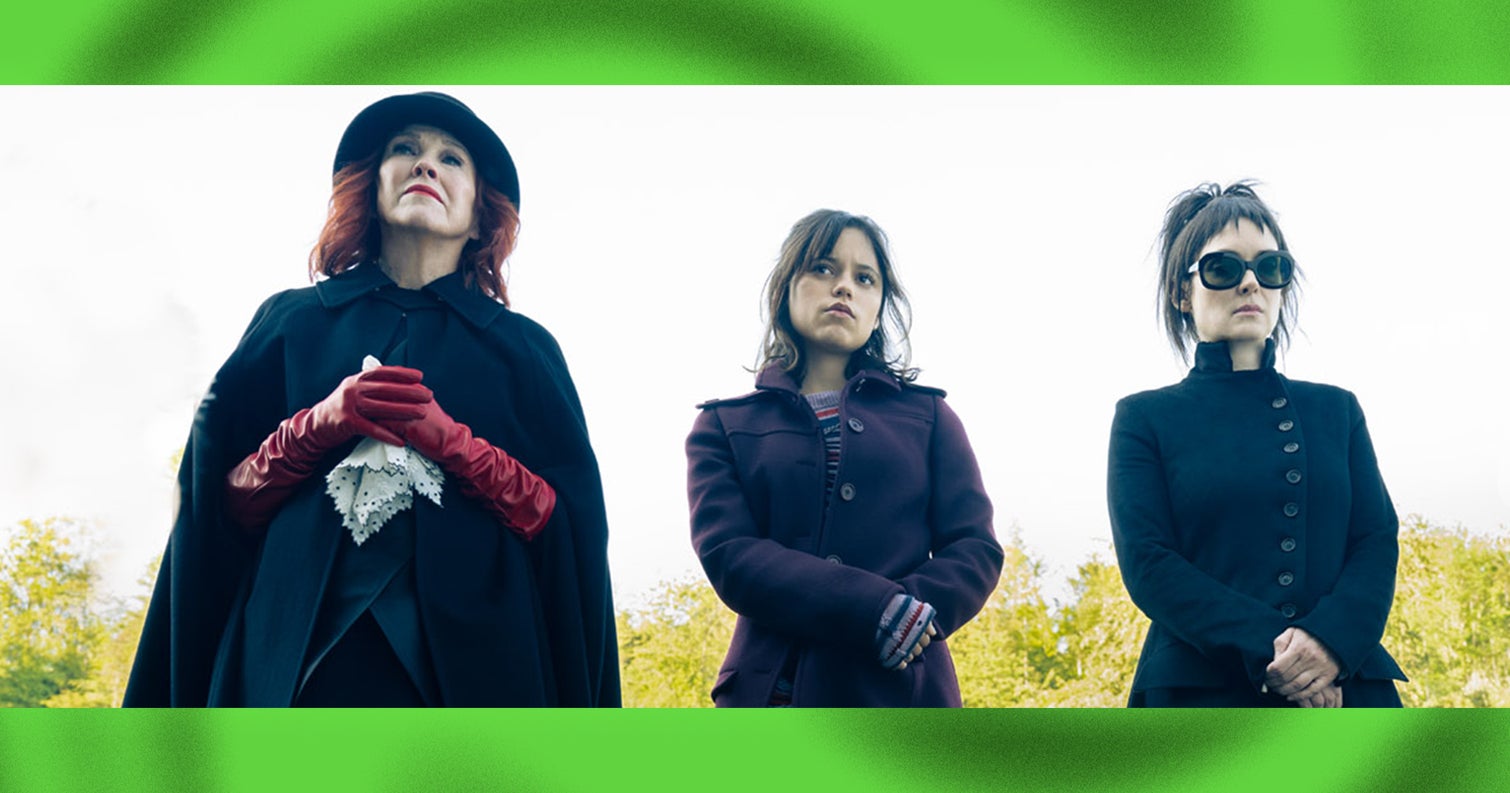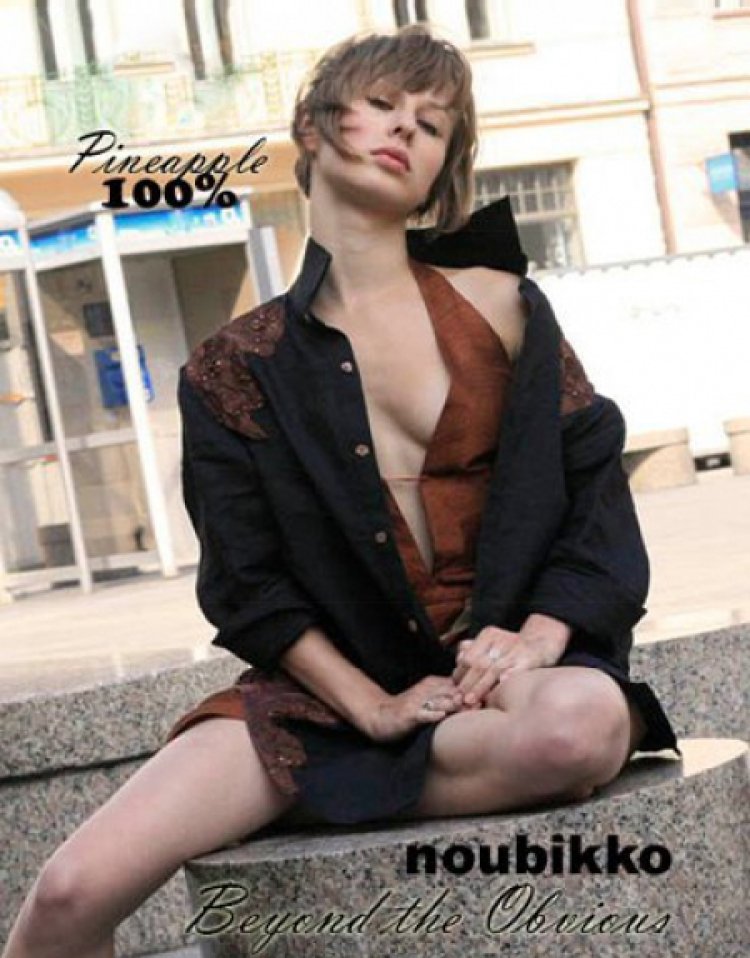Beetlejuice Beetlejuice Goth Costumes Are Inspired By Victorian Fashion, ‘80s Grunge & ‘70s Television
From the moment Tim Burton’s Beetlejuice graced the screen in 1988, the film became part of the cinematic fashion canon. When beginning work on the sequel, Beetlejuice Beetlejuice, costume designer Colleen Atwood kept this at the forefront of her mind despite not having worked on the original, which featured looks by Aggie Guerard Rodgers. “Beetlejuice’s costumes were something that everyone remembers from the first film, and so we wanted to honor that,” says the four-time Academy Award winner and long-time Burton collaborator. In addition to aging and scuffing up the signature striped suit worn by the demon (played by Michael Keaton) — to show “that he’d been crusting around in the underworld” for the past 30-plus years — Atwood says she updated the returning pieces in terms of fit and fabric to look “a little bit more today.” Atwood created most of the new looks in Beetlejuice Beetlejuice, supplementing the custom-made pieces with vintage purchases and Elena Dawson designs. In keeping with teenage Lydia Deetz’s penchant for goth fashion, Winona Ryder’s adult character’s aesthetic evolves into a “high-end hippie goth” with a “very curated” closet made up of tailored blazers and jackets with interesting detailing, high-neck dresses, and long skirts. “Her character leaned into Victoriana in that period, and we just took it and modernized it. She’s a woman now instead of a girl, so [her fashion has] got a more mature quality to it,” Atwood says. While Lydia has a strong sense of personal style, she trades her buttoned-up uniform for a showy V-neck maxi dress while using her psychic powers for entertainment, as a host for a paranormal television show. “It’s like a costume for a horror movie. It sort of hearkens to ‘70s American television,” Atwood says of the look that borders on cosplay when compared to the rest of Lydia’s wardrobe. Similarly to Lydia, her stepmother Delia Deetz (Catherine O’Hara) plays up her artist persona while in public, wearing a graphic dress when working with a temperamental graffiti artist before slipping into an ostentatious black-and-white coat that Atwood found online. “[When I found the coat,] It was like, ‘I’m never going to figure out anything better than this. It’s so horrible, it’s good,’” she says. “She was an artist so she was eccentric in her choices.” Back at home with family, Delia, like Lydia, embraces a more muted wardrobe that, according to Atwood, borrows from the late ‘80s and early ‘90s — though not without an artistic flair that viewers were introduced to three decades ago. While dressing for a funeral, Delia accessorizes her conservative black coat with siren red gloves and a familiar hat that’s the “one piece that’s from the original,” according to Atwood. Wednesday’s Jenna Ortega, as Lydia’s daughter Astrid, gives her character a personality that firmly distinguishes her from the color-averse titular character of the Netflix show. Likewise, Atwood, who is the costume designer for the series, gives Astrid a distinct aesthetic that is decidedly more grunge than goth. In contrast to her mom, Astrid is drawn to prints like plaid, stripes, and florals. “We used color. We used softer fabrics and more innocent kind of materials than the sort of tongue-in-cheek stuff of Wednesday Addams,” says Atwood. That’s not to say that Astrid’s looks lack humor. Nowhere is that more clear than when Astrid opts for a Marie Curie costume for Halloween. Atwood wanted the silver gown, featuring a high neck and full skirt, to have a “radiation vibe to” as a nod to the scientist’s most notable invention. “I used a Japanese fabric that’s got metal and nylon in it. So it really is a scientific material,” says Atwood. “That was exciting to me: to be able to make a period costume out of an almost futuristic material.” While, at the beginning of the film, Astrid and Lydia struggle to connect, as the movie progresses, Atwood creates a visual throughline as the two begin to bond again. In one scene, Astrid appears in a daisy-print dress with a plaid shirt tied around the waist, while Lydia wears a schoolgirl-esque plaid dress. “You know how it is with mothers and daughters: sometimes they don’t want to be connected but they are and they don’t even know it,” she says. Interestingly both of the pieces were inadvertently connected, too, coming from old materials found in Atwood’s fabric storage units. “Jenna’s dress was from a really old fabric I’ve been carrying around forever. I always loved it but it never applied it to anything… Ironically Winona’s little pinafore thing was also made from a fabric that I had for 20 years,” she says. “[When sourcing,] if you find something good, you go, ‘Oh, I know it’ll work sometimes even though it doesn’t work right now for what I’m doing.’ So they both came into play in a funny way and then ended up in the same scene together, which I didn’t plan.” In contrast to the darker color scheme embraced by


From the moment Tim Burton’s Beetlejuice graced the screen in 1988, the film became part of the cinematic fashion canon. When beginning work on the sequel, Beetlejuice Beetlejuice, costume designer Colleen Atwood kept this at the forefront of her mind despite not having worked on the original, which featured looks by Aggie Guerard Rodgers.
“Beetlejuice’s costumes were something that everyone remembers from the first film, and so we wanted to honor that,” says the four-time Academy Award winner and long-time Burton collaborator. In addition to aging and scuffing up the signature striped suit worn by the demon (played by Michael Keaton) — to show “that he’d been crusting around in the underworld” for the past 30-plus years — Atwood says she updated the returning pieces in terms of fit and fabric to look “a little bit more today.”

Atwood created most of the new looks in Beetlejuice Beetlejuice, supplementing the custom-made pieces with vintage purchases and Elena Dawson designs. In keeping with teenage Lydia Deetz’s penchant for goth fashion, Winona Ryder’s adult character’s aesthetic evolves into a “high-end hippie goth” with a “very curated” closet made up of tailored blazers and jackets with interesting detailing, high-neck dresses, and long skirts. “Her character leaned into Victoriana in that period, and we just took it and modernized it. She’s a woman now instead of a girl, so [her fashion has] got a more mature quality to it,” Atwood says.
While Lydia has a strong sense of personal style, she trades her buttoned-up uniform for a showy V-neck maxi dress while using her psychic powers for entertainment, as a host for a paranormal television show. “It’s like a costume for a horror movie. It sort of hearkens to ‘70s American television,” Atwood says of the look that borders on cosplay when compared to the rest of Lydia’s wardrobe.

Similarly to Lydia, her stepmother Delia Deetz (Catherine O’Hara) plays up her artist persona while in public, wearing a graphic dress when working with a temperamental graffiti artist before slipping into an ostentatious black-and-white coat that Atwood found online. “[When I found the coat,] It was like, ‘I’m never going to figure out anything better than this. It’s so horrible, it’s good,’” she says. “She was an artist so she was eccentric in her choices.”
Back at home with family, Delia, like Lydia, embraces a more muted wardrobe that, according to Atwood, borrows from the late ‘80s and early ‘90s — though not without an artistic flair that viewers were introduced to three decades ago. While dressing for a funeral, Delia accessorizes her conservative black coat with siren red gloves and a familiar hat that’s the “one piece that’s from the original,” according to Atwood.

Wednesday’s Jenna Ortega, as Lydia’s daughter Astrid, gives her character a personality that firmly distinguishes her from the color-averse titular character of the Netflix show. Likewise, Atwood, who is the costume designer for the series, gives Astrid a distinct aesthetic that is decidedly more grunge than goth. In contrast to her mom, Astrid is drawn to prints like plaid, stripes, and florals. “We used color. We used softer fabrics and more innocent kind of materials than the sort of tongue-in-cheek stuff of Wednesday Addams,” says Atwood.
That’s not to say that Astrid’s looks lack humor. Nowhere is that more clear than when Astrid opts for a Marie Curie costume for Halloween. Atwood wanted the silver gown, featuring a high neck and full skirt, to have a “radiation vibe to” as a nod to the scientist’s most notable invention. “I used a Japanese fabric that’s got metal and nylon in it. So it really is a scientific material,” says Atwood. “That was exciting to me: to be able to make a period costume out of an almost futuristic material.”

While, at the beginning of the film, Astrid and Lydia struggle to connect, as the movie progresses, Atwood creates a visual throughline as the two begin to bond again. In one scene, Astrid appears in a daisy-print dress with a plaid shirt tied around the waist, while Lydia wears a schoolgirl-esque plaid dress. “You know how it is with mothers and daughters: sometimes they don’t want to be connected but they are and they don’t even know it,” she says. Interestingly both of the pieces were inadvertently connected, too, coming from old materials found in Atwood’s fabric storage units.
“Jenna’s dress was from a really old fabric I’ve been carrying around forever. I always loved it but it never applied it to anything… Ironically Winona’s little pinafore thing was also made from a fabric that I had for 20 years,” she says. “[When sourcing,] if you find something good, you go, ‘Oh, I know it’ll work sometimes even though it doesn’t work right now for what I’m doing.’ So they both came into play in a funny way and then ended up in the same scene together, which I didn’t plan.”

In contrast to the darker color scheme embraced by the living trio, Atwood unexpectedly used a brighter color scheme for the dead residents of the underworld. “I’ve got a lot of avocado, faded turquoise, those kind of colors [in those scenes]. We wanted the underworld to be sort of like when you look at old photographs — that faded sort of Technicolor vibe,” she says. “Also, I was working with skin tones that were weird, that weren’t normal skin tones. So those colors look really good with faces that are green and gray… you wouldn’t want black and white down there.”
As the film nears its climax, there’s a Soul Train scene, which sees a ‘70s-inspired dance sequence and an explosion of fabrics, colors, and prints as passengers board a locomotive that takes their souls to the afterlife. Watching it, a quote from the original Beetlejuice continues to ring true: “It’s showtime!”

Beetlejuice Beetlejuice is out now.
Like what you see? How about some more R29 goodness, right here?





















